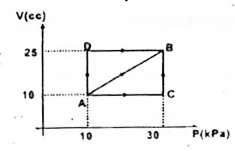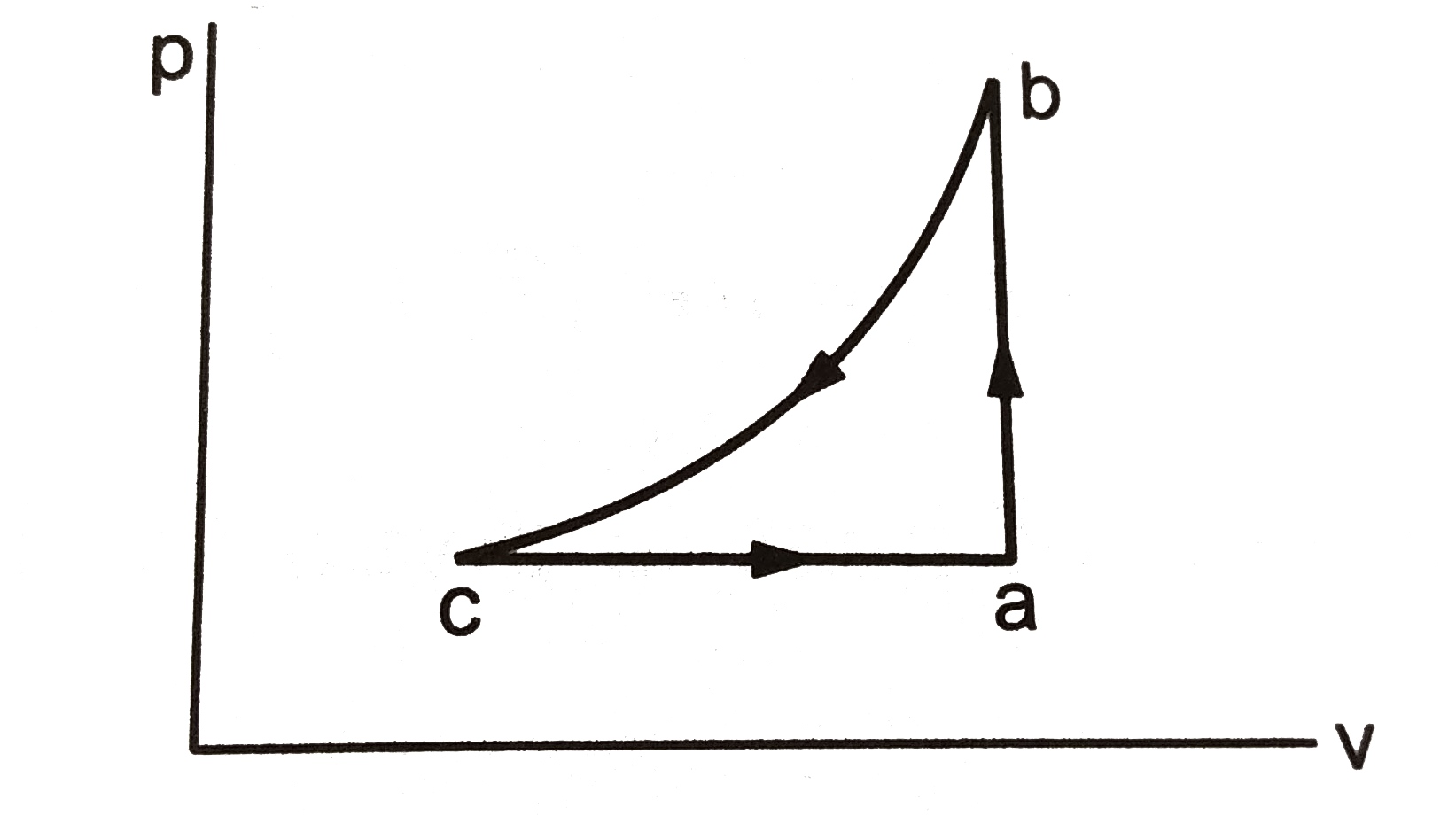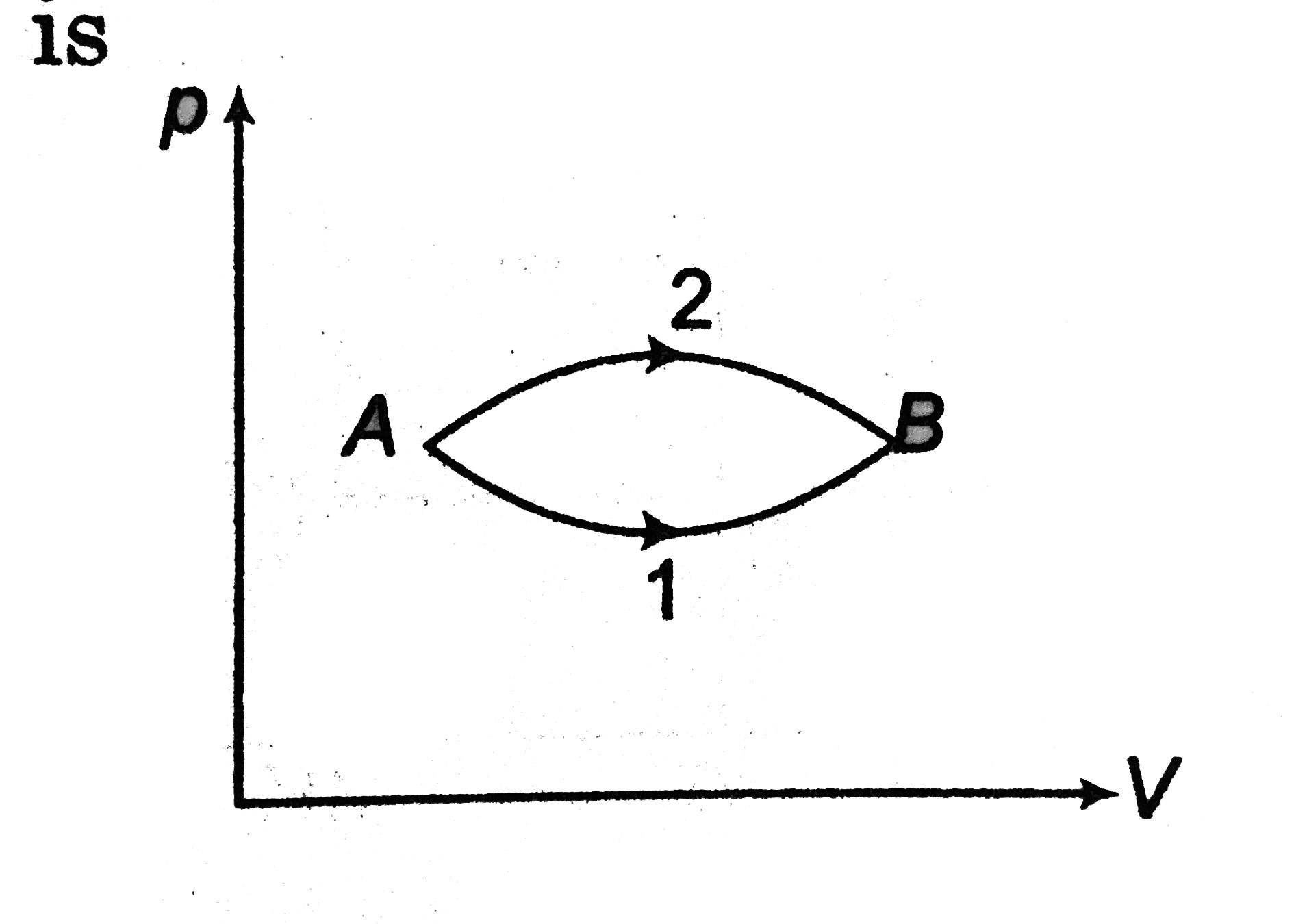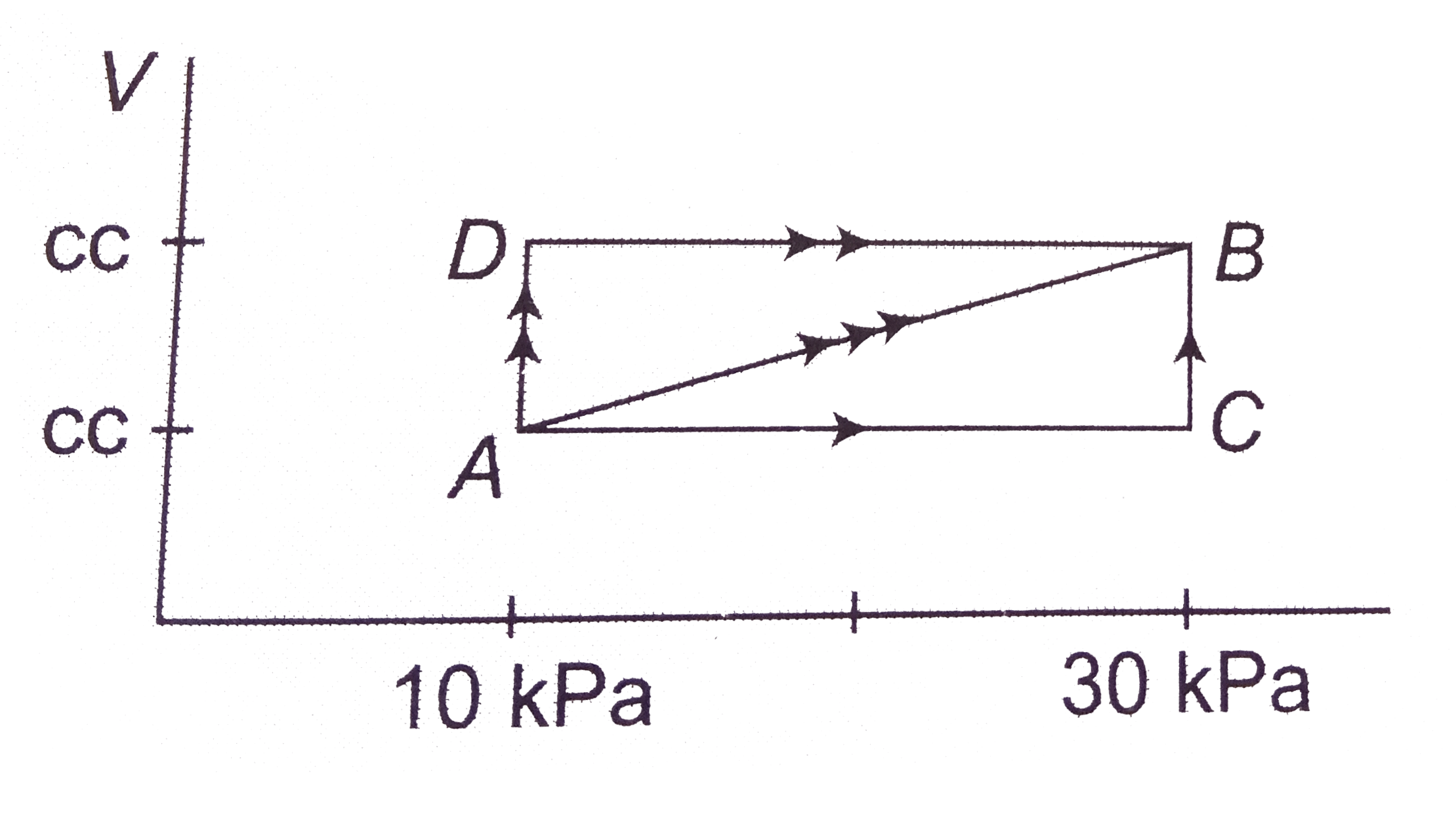The figure shows two paths through which a gas can be taken from state A to state B. If the ratio of work done by the gas in the two paths is xy, then find (x+y).
'(##CEN_KSR_PHY_JEE_C15_E01_001_Q01##)'
The correct Answer is:5
Topper's Solved these Questions
Similar Questions
Figure shows three paths through which a gas can be taken from the state A to the state B. Calculate the work done by the gas in each of the three paths.

View Solutionshows three paths through which a gas can be taken from the state A to the state B. calculate the work done by the gas in each of the three paths.


View Solution
Knowledge Check
The figure shows two paths for the change of state of a gas from A to B. The ratio of molar heat capacities in path 1 and path 2 is
 A<1B<1C1DData insufficient
A<1B<1C1DData insufficient
shows three paths through which a gas can be taken from the state A to the state B. calculate the work done by the gas in each of the three paths.

View Solution
As shown in figure three paths through which a gas can be taken from the state A to the state B. Calculate the work done by the gas in each of the three paths.
View SolutionThe figure shows two paths for the change of state of a gas from A to B. The ratio of molar heat capacities in path 1 and path 2 is

View SolutionThe figure shows two paths for the change of state of a gas from A to B. The ratio of molar heat capacities in path 1 and path 2 is

View SolutionThe equivalent capacitance for the network shown in the figure is k7pF. Find k.
'(##CEN_KSR_PHY_JEE_CO19_E01_020_Q10##)'
View SolutionIn the shown figure, the focal length of equivalent system is 50x13. Find the value of x.
'(##CEN_KSR_PHY_JEE_C26_E01_020_Q07##)'
View SolutionIf the current in the circuit sbown below, varying as a function of time is i0sin500t, then find io.
'(##CEN_KSR_PHY_JEE_C24_E01_038_Q21##)'
View Solution
